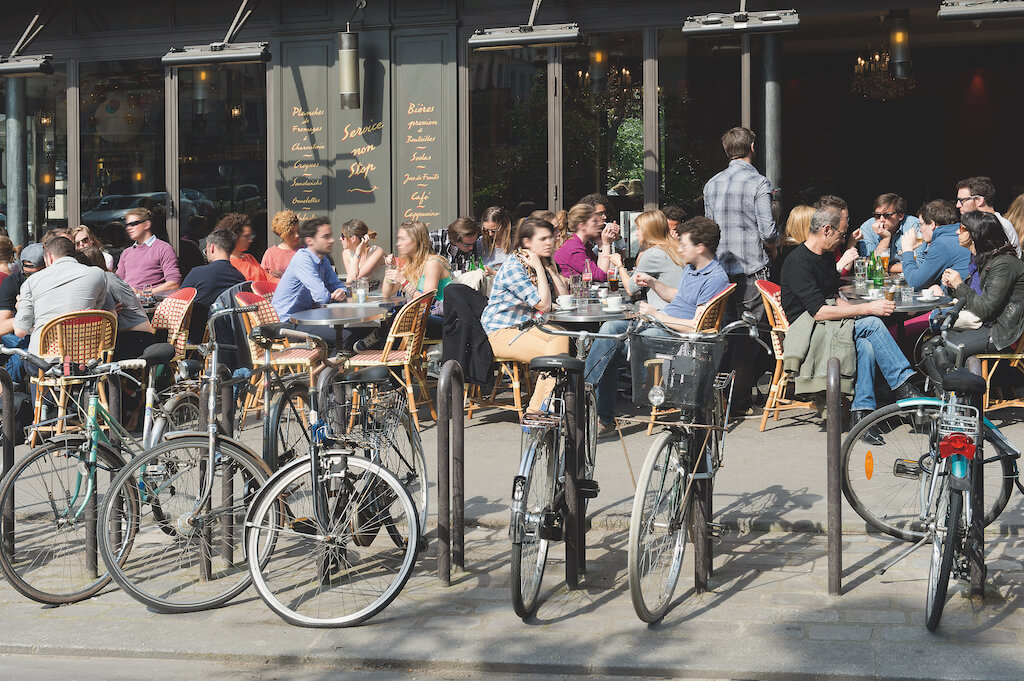Autumn Gear Guide
Find inspiration in our Gear Guide that will keep you out on your bike through wind or rain.
Download NowIn Bolivia’s Salar de Uyuni, you can stand in the middle of a vast salt flat, with nothing but the soft crunch of crystallized earth underfoot and the occasional breath of wind in your ears. In Japan’s Sagano Bamboo Forest, the hush is so profound that even the rustle of leaves feels reverent. The kind […]
In Bolivia’s Salar de Uyuni, you can stand in the middle of a vast salt flat, with nothing but the soft crunch of crystallized earth underfoot and the occasional breath of wind in your ears. In Japan’s Sagano Bamboo Forest, the hush is so profound that even the rustle of leaves feels reverent. The kind of quiet you find in these places — real, soul-deep silence — is increasingly rare. And according to a recent feature in Condé Nast Traveler on the 50 quietest places in the world, it’s something people are now actively seeking.
Call it quiet tourism, the silence movement, or just the human need for peace — the message is clear: we’re craving stillness. But here’s the problem. To experience this kind of serenity, most of us have to travel thousands of kilometres and burn a few carbon footprints to get there. Not to mention the expense. For most, it is completely out of reach.
What if quiet didn’t have to be a destination, but a way of life? What if a quiet, peaceful urban experience could be had by all?
Modern city life hums at a constant, relentless pace. Noise pollution — mostly from cars and construction as well as industry — is now considered a public health threat by the World Health Organization. Studies have linked long-term exposure to urban noise with increased stress, disrupted sleep, cardiovascular issues, and even cognitive impairment in children.
For cyclists, this isn’t news. Every ride through a traffic-heavy urban area reinforces how chaotic and mind-numbing cities have become. Between revving engines, honking horns, slamming doors and the high-pitched whine of brakes, it’s no wonder many of us dream of quiet country roads and car-free escapes. But what if we flipped that mindset?
What if, instead of escaping the noise, we focused on reducing it — street by street, neighbourhood by neighbourhood?
Bicycles are among the quietest forms of transportation ever invented. They glide. They hum softly. They don’t idle at intersections or roar to life. They don’t pollute the air, and they don’t pollute our soundscape either. And that’s why we love them.
Cities that prioritize cycling infrastructure often experience a drop not only in carbon emissions and traffic congestion, but in noise levels too. In Amsterdam and Copenhagen, where cycling rates are among the highest in the world, certain neighbourhoods are virtually free from motorized traffic. You’ll hear footsteps, conversations, birdsong, and the rhythmic whirr of tires on pavement. It’s a completely different urban soundtrack and it’s healthier on many levels.
The irony of the Condé Nast list is that many of the world’s quietest places are now attracting more noise: from airplanes, tour groups, and over-tourism. The pursuit of silence has, in some cases, endangered the very thing people came for.
But cities have the potential to do the opposite. We can build quiet instead of eroding it. And bikes are a critical part of that future.
Think about the areas in your city that feel the most relaxing. Maybe it’s a car-free pedestrian zone downtown. Maybe it’s a park with a protected bike path. Maybe it’s a laneway turned linear park. These micro-oases offer a glimpse into a quieter urban life. And every added kilometre of cycling infrastructure expands that zone of calm.

Paris has become quieter and cleaner thanks to fewer cars and more bicycles and pedestrians
Paris is one city with an urban center that was subject to excessive noise and air pollution for years if not decades. Then, everything changed.
The French capital has been undergoing a stunning transformation over the last decade. With its ambitious “15-minute city” plan, Mayor Anne Hidalgo has added hundreds of kilometres of protected bike lanes, pedestrianized major arteries, and cracked down on car usage. The result? The streets are quieter, the air is cleaner, and the city feels — well, more livable.
It’s not about banning cars outright (well, not yet). It’s about tipping the balance away from noise and toward something more human.
Let’s be honest: we’ll still want to get away sometimes. Remote trails, mountain passes, and backcountry bike routes will always call to cyclists who love the combination of quiet and adventure. But what if our starting point — our homes, our neighbourhoods, our commutes — were quieter too?
A shift to cycling-first cities means less need to escape. It means kids growing up hearing birds in the morning instead of traffic. It means office workers stepping out for lunch and feeling the air instead of the fumes. It means elders walking or wheeling comfortably down safe, peaceful streets.
And for those who still crave the silence of the Salar or the bamboo groves, cycling also offers the quietest, lowest-impact way to reach those places without adding to their degradation. It’s a full-circle solution.
Find inspiration in our Gear Guide that will keep you out on your bike through wind or rain.
Download Now
Leave a comment